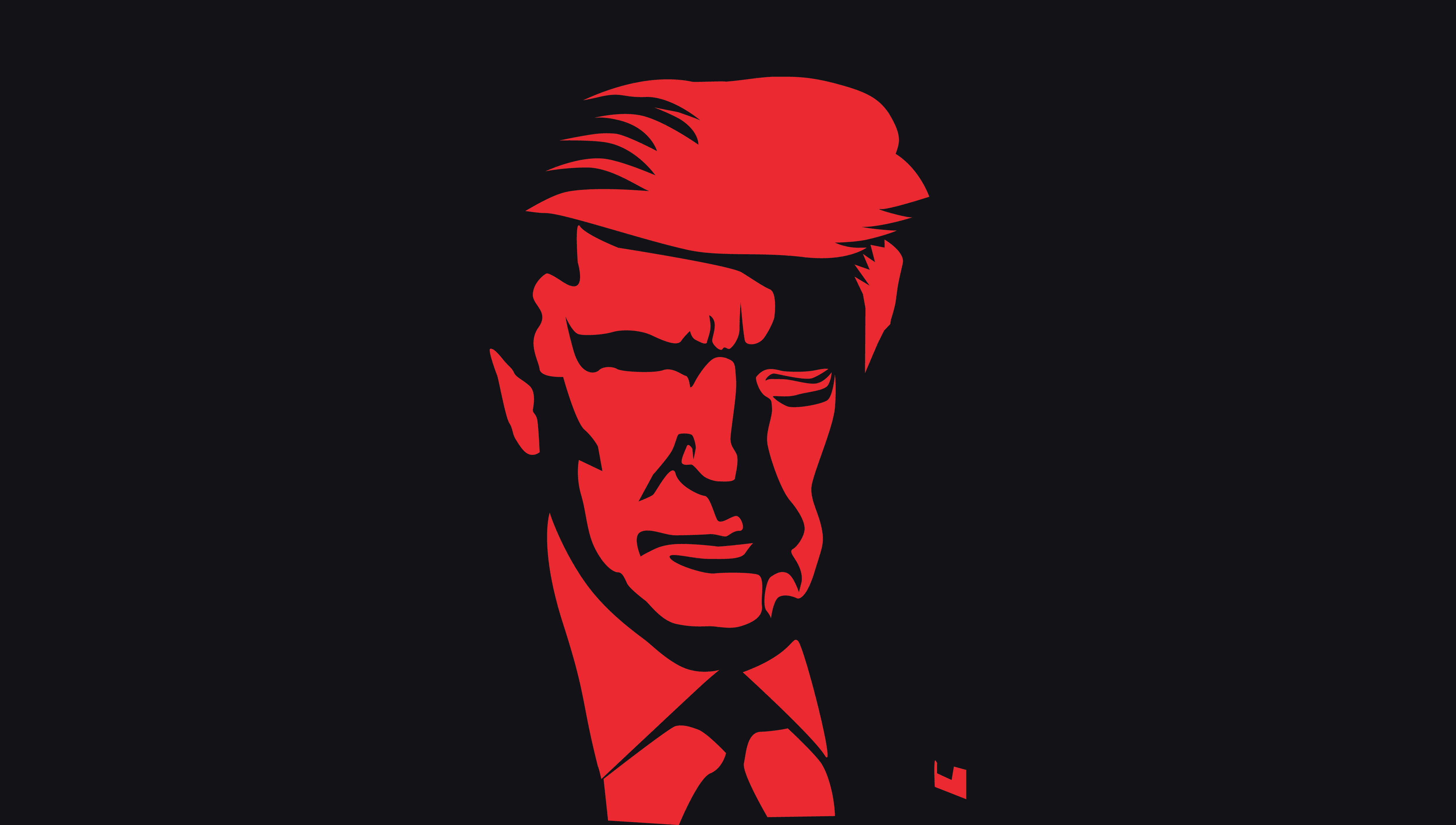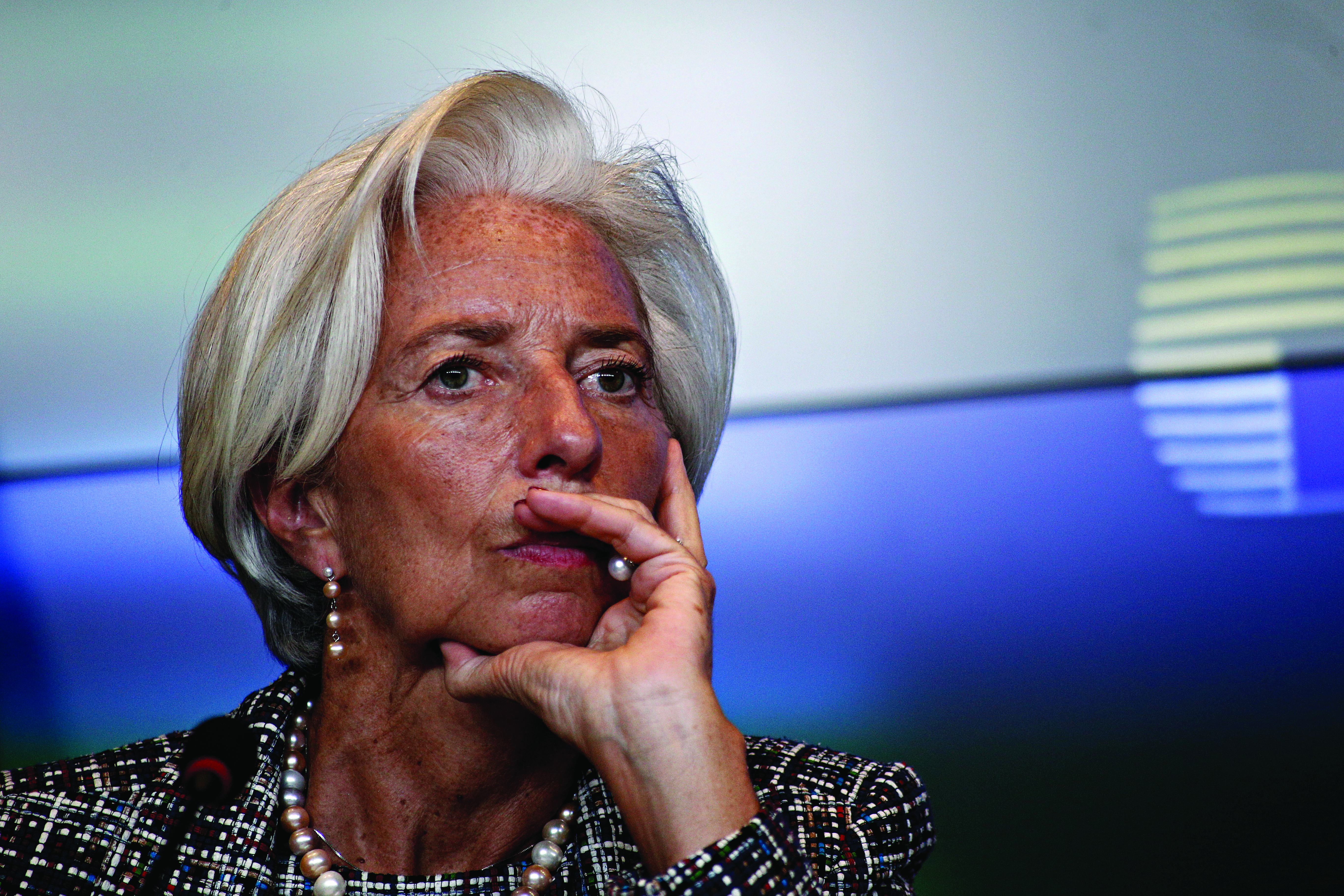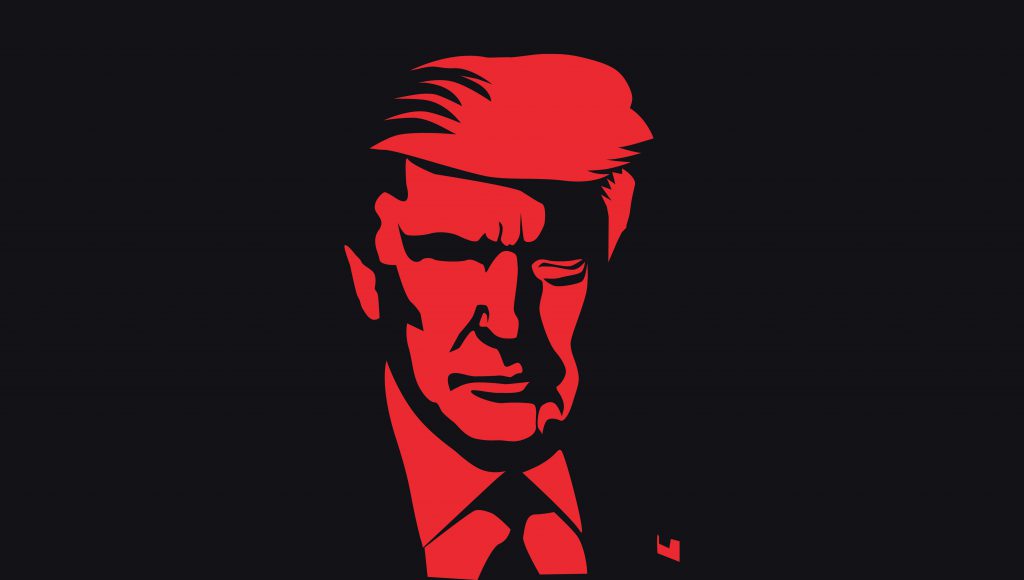It might have been the hand of fate or some other guiding force that timed everything perfectly. The coincidence that took place in the early days of 2018 was drenched in irony: just several hours after the IMF published an optimistic forecast for growth in the new year, US President Donald Trump signed a presidential decree that was the first shot in what has developed into “the biggest financial war in history”.
The IMF, as well as many other financial institutions, failed to predict the American declaration of war against the Chinese enemy – this despite the fact that throughout (and since) his election campaign, Trump has made his intentions clear.

Trump spread around his aggressive declarations against those who “rape our country” and those who are “responsible for the biggest theft in history” long before entering the White House. Back in 2011, when he was still scampering about between the young women on stage in the “Miss Universe” competitions and was an independent candidate, the future leader of the greatest power in the world claimed that China was plotting to “defeat us and take over our country”.
After a year of war and nearly half a year of tense ceasefire, the financial institutions are much more careful and more pessimistic. The growth forecast was updated accordingly and the idea of “trade tensions” which, until recently, was completely absent from reports, now stars in every update. The IMF, for instance, recently cut their growth forecast for the global economy for the third time in a row to the lowest growth rate in the last decade, while warning of the “delicate state” of the global economy and urging the parties to settle their disputes and reach an agreement. The IMF published the negative growth update just several weeks before Trump pulled his last stunt, reigniting the biggest trade war ever.
Midnight duel
Just several days before the Chinese delegation which was supposed to finalize the details of the “peace agreement” between the powers landed, the Chinese were met with an unwelcome surprise. The American president announced in a tweet on Twitter, that he intended to immediately implement the next step in escalation – raising the taxes on Chinese products to the tune of $200 billion from a rate of 10% to 25%.

But Trump didn’t stop there and went on to announce that the sanction would go into effect on Friday, May 10th, at 12:01 Washington time – only two days after the planned arrival of the Chinese delegation to the USA. In so doing, the president forced the Chinese to enter into negotiations under pressure and uncomfortable conditions. Trump also made sure to block any emergency exits, when he made a non-subtle threat regarding the next phase: “$325 million worth of Chinese goods being sent to us are still going untaxed – but soon they too will be taxed at a rate of 25%.”
Beijing responded by declaring that it was considering canceling discussions and keeping the delegation at home, but it was an idle threat. The Chinese Foreign Ministry released an announcement that it “hoped that both sides would be flexible and meet in the middle”. It is with pragmatic optimism that both sides stand before the final round of negotiations and the announcement of the long-awaited agreement; both sides have exchanged accusations, mutual sanctions, and are afraid of what is to come.
A pair of aces
Though the Chinese expected some trouble, they were surprised by the intensity with which things have changed in such a short time. Perhaps they thought that they were playing chess, not realizing that Trump is playing a different game altogether. Just a year ago, Trump described President Xi Jinping as a “world class poker player”. Yes, poker is Trump’s game, and what is more exciting to the aggressive player like him, than to see the opponent’s small pile of tokens and with one bold gesture (or a tweet of less than 100 words), push bundles of tokens into the center of the table with a dramatic statement.
The Chinese can make threats until kingdom come that they will get up from the table and stop playing, but their pile of chips is diminished, and they are deeply invested in the potential payoff. With the declaration that “any action that the US takes against us will be met with a similar response”, the Chinese can indeed cash out, but they will be left with a rather paltry pile of chips, since they have already taxed over 90% of American incoming goods. The Americans, by comparison, until recently only charged a customs tax at a rate of 25% on a tenth of the volume of goods coming in annually (another $200 billion worth will be taxed at “only” 10%). Even after the last step which brought the tariffs up to 25%, most of the goods imported from China to the US are still untaxed. In other words, the American president is still sitting on a huge pile of poker chips.

But poker is not only a game of who has more. It is also a card came with a great deal of psychology. Trump is a ‘poker bully’, an aggressive player that squeezes his opponent, putting relentless pressure on them and constantly increasing the amounts of the wager. To play against a poker bully like this is hard and frustrating, but it turns into a nightmare when the bully is holding a pair of aces. Unfortunately for Xi Jinping, Trump is precisely that aggressive bully who, when the deck was cut, was dealt a strong hand. Very strong.
The American economy has been performing fantastically lately, breaking all of the gloomy predictions for it ever since the trade war broke out. The unemployment rate is at a 50 year low (only 3.6%), the rate of job creation rose again, surprisingly (263 thousand jobs in April), and wages continue to rise (an increase of 3.2% as compared with the same period in 2018). Above all, we have the following surprising and important figure: in the first quarter of 2019, the American economy grew at the rapid rate of 3.2% – nearly a full percentage point above the consensus forecast. Although projections predicted a more modest growth rate in the coming quarters, according to all estimates, 2019 will be the year in which another historic record is set: the longest continuous growth in the history of the US economy with over 40 consecutive quarters of growth.
On the other hand, the Chinese engine is being quickly stalled. The Chinese government recently reduced its annual growth prediction, and the IMF expects further slowing of growth to 6.3% – the slowest growth rate in nearly 30 years. Exports and domestic investments, the huge growth engines that have made the economy skyrocket in recent years, have slowed significantly, with the rate of debt rising for years already at high risk. Chinese Premier Li Keqiang admitted at the annual parliamentary meeting, that “the trade friction with the US is darkening Chinese growth.”
Warning signs
It is no coincidence that Trump linked the excellent performance of the American economy to the trade war. According to him, one of the reasons for the healthy economic situation of the US is the increase in tax revenues from the imposition of tariffs. These revenues indeed constitute growth of over $16 million, but the effect of this on the American economy is negligible – moreover, it was not the Chinese who paid these taxes but rather the American importers, who handed down the increased expense to the American consumer.
And this is where a warning sign should come on – the hourglass is running out on the American side too. While economic indicators are strong, momentum may change over the course of the coming quarters. The decline in imports to the US, which indicates a decrease in demand, is worrisome. Private consumption, the economy’s growth engine (responsible for around two-thirds of growth), marked growth of just 1.2% – less than half of the growth recorded for the fourth quarter of 2018 (2.5%). This figure alone should worry the leaders of the American economy. The last tax increase and the expected increased expense of thousands of consumer products as a result, could affect around a million positions in the job market and cost an average annual increase of around $800 per household. This is no small blow to the heart of the American growth engine.
It seems that a significant portion of the ‘missiles’ that the US ‘launched’ at China landed in its backyard – and we still haven’t addressed the direct damage expected as a result of the Chinese response. The first increase in customs taxes on American goods has already done severe harm to exporters. The second increase will be a mortal wound in the soft belly of Washington.
Over the past few quarters, agricultural exporters have suffered painful declines in demand, and other industries have almost entirely disappeared. The traditional industries such as steel and iron have also felt a sharp decline and the hard blow did not spare the heart of American industry – the auto and energy industries. These sectors are the political “base” of the Republican party, where they are already beginning to realize that the trade war threatens to exact a considerable political price.
All of this frenzy, along with falls on the stock exchange, have been adding steam to the already overfull pressure cooker. The financial markets, which tend towards a kind of chronic manic depression as it is, are known to thrive on certainty and stability – two elements that are not expected to characterize the global financial system in the near future. The anxiety on Wall Street will not bring peace of mind to the man in the Oval Office.
The good agreement
Ultimately, in this clash of Titans, everyone takes a hit. China and the US, the biggest economies in the world, are the pulsing heart of the global economy, and together are responsible for over a third of global output, about a quarter of global imports and more than a fifth of total exports. The joint trade of these two giants, in commodities alone, totaled $8 trillion in 2018, and together are responsible for over 50% of the world’s annual growth.
So, the faster this dispute that is rocking the global economy gets resolved, the better it will be for everyone – especially stock exchanges around the world, that have been on a nonstop roller coaster for the past year. However, it is important to remember that for the long term, a good deal is better than a quick deal – let it take as long as it takes, even at the cost of further losses to the financial and industrial sectors. The trade deal, when signed between the two powers, will improve world trade and will solve, or at least alleviate some of the major challenges facing the global economy. It is not only the US trade deficit with China at stake here, but also essential issues of critical importance to many economies around the world, including Israel, such as, among other things, matters of intellectual property and the forced handover of technological information.
Even if for now he has the better hand, as an experienced poker player, Trump should be familiar with another well-known poker insight, of utmost relevance to his Chinese rival Jinping: “Life is not always a matter of holding good cards, but sometimes, playing a poor hand well”.
Translated by Zoe Jordan





